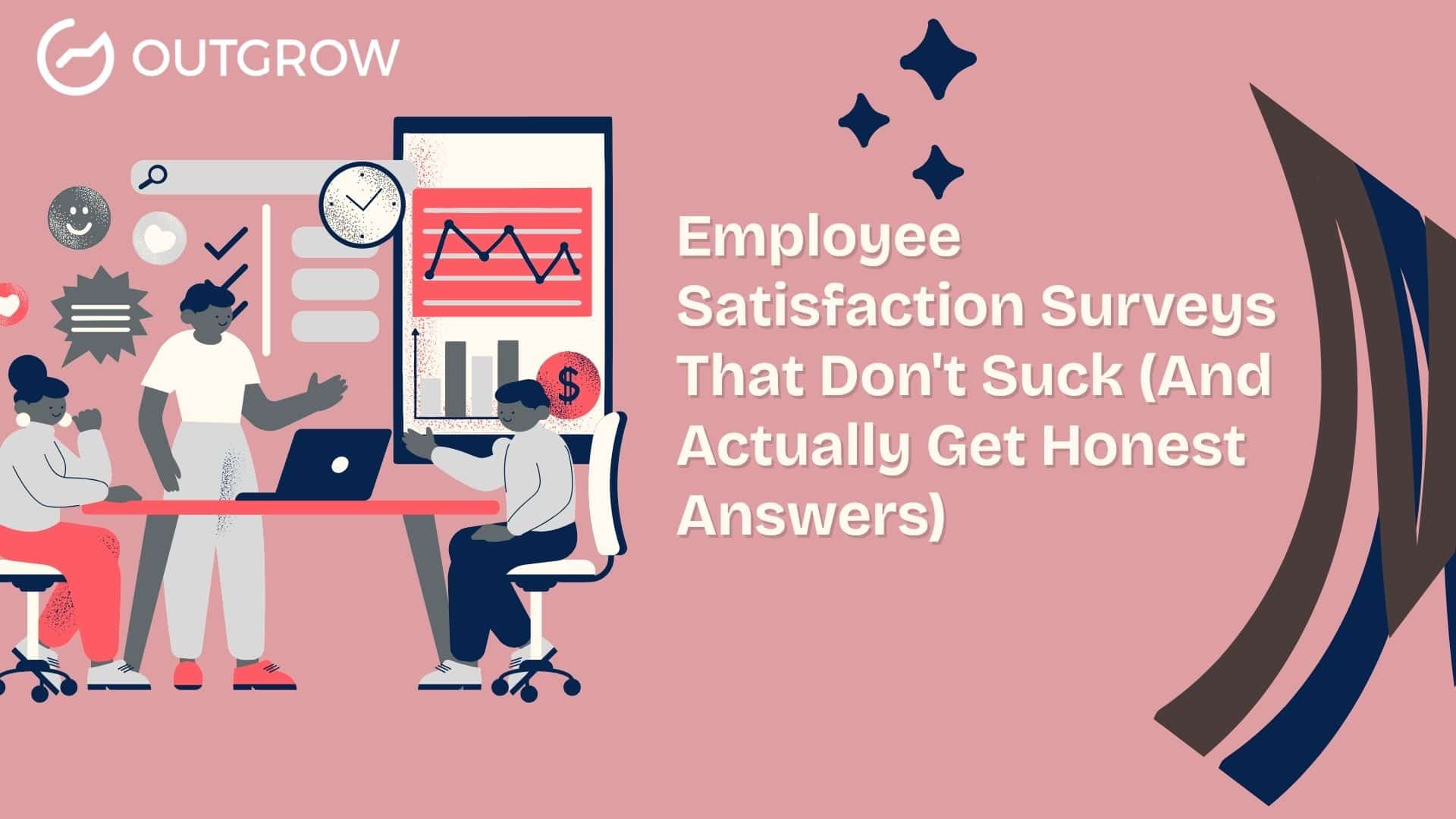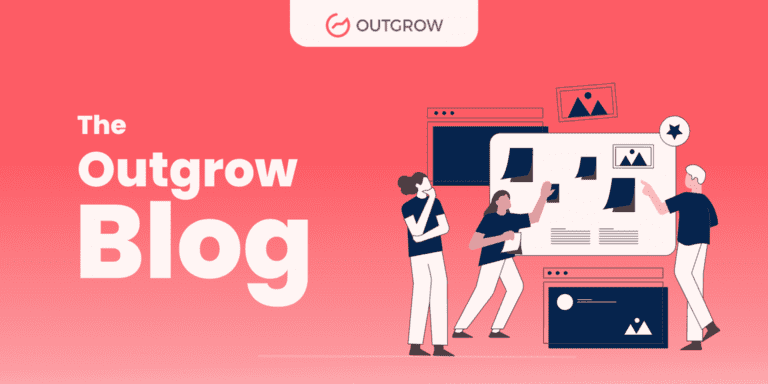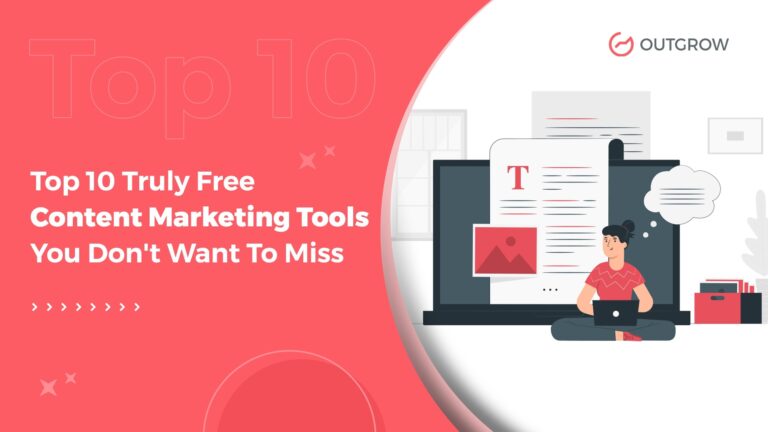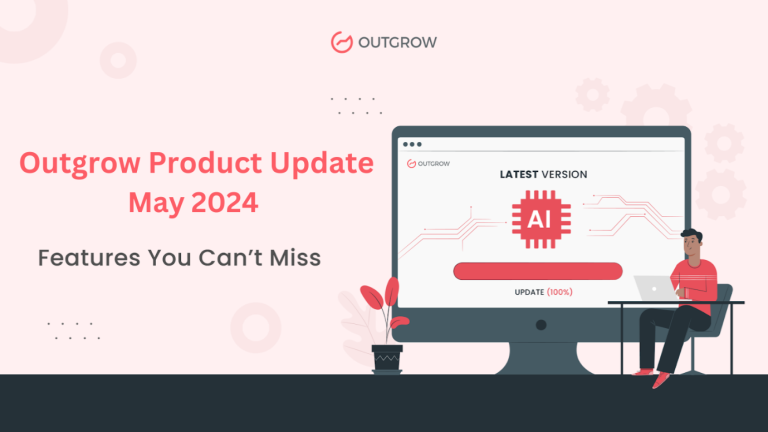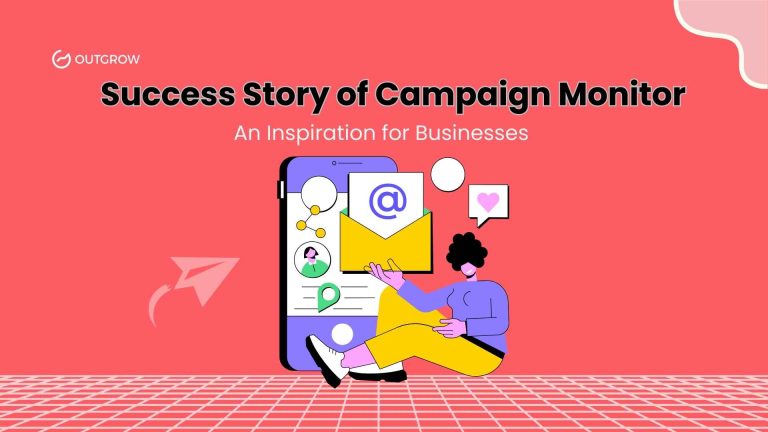Introduction
Table of Contents
Most employee satisfaction surveys: complete garbage. You send them out, people either ignore them or speed-click through, and what you get back tells you nothing useful.
Look, your employees have strong opinions. They know what’s broken, what works, and what needs fixing. But throw a 50-question employee satisfaction survey at them, packed with corporate jargon and those useless rating scales, and they’re done. Mentally checked out before question five.
We’ve worked with thousands of companies on redesigning their employee satisfaction survey strategy. Response rates go from 30% to 85%. The feedback actually means something. Leadership finally gets what’s really happening instead of sanitized nonsense.
This guide covers everything about creating an employee satisfaction survey that people want to fill out. Zero fluff. Zero corporate BS. Just what actually works.
Why Your Current Employee Satisfaction Survey Fails
Most employee satisfaction surveys bomb for reasons you can predict:
- Length kills everything: Your people are swamped. They see “approximately 20-25 minutes,” and they’re gone. The magic number for an employee satisfaction survey? 5-7 minutes tops. Push past that and you lose them.
- Questions mean nothing: “How satisfied are you with company culture?” What does that even ask? Culture covers dozens of things. Get specific. Ask about communication. Recognition. Workload. Things someone can actually answer.
- No real anonymity = no real honesty: Do your employees think their manager sees their answers? They’ll write what you want to read. True anonymity isn’t optional for an employee satisfaction survey that works. Skip it and you’re collecting lies.
- Nothing changes after: This kills participation faster than anything else. People answer because they think something might improve. Nothing happens? They stop trying. Simple as that.
- Format puts people to sleep: Walls of text and 1-10 scales? Nobody stays engaged. Progress bars, interactive bits, and different question types keep people moving through your employee satisfaction survey instead of abandoning it.
What Makes an Employee Satisfaction Survey Work
Start with questions tied to outcomes. Ditch the “Are you happy?” generic stuff. Ask things connected to problems you can fix. “Do you have the tools you need to do your job well?” destroys “Rate your satisfaction with resources.” Not even close.
Pick question types that work:
- Multiple choice when you need clear categories (remote work preferences, benefit priorities)
- Rating scales for intensity (stick to 3-5 points; nobody on earth knows what the difference is between a 7 and an 8)
- Open-ended questions rarely, one or two max
- Skip logic, so it personalizes based on what people say
Timing? Huge deal. Don’t launch your employee satisfaction survey during quarter-end chaos, right before holidays, or mid-reorganization. Find a calm period when people can think straight.
Write like a human talks. Ask questions as you’d ask them over coffee. “What frustrates you most about your workday?” versus “Please identify primary pain points in your operational workflow.” Come on.
Interactive quiz makers or survey tools help here. You build experiences that adjust, show progress, and feel conversational. Not static forms people hate.
Building Your Employee Satisfaction Survey: Step-by-Step
Practical time. Here’s how to build an employee satisfaction survey from nothing:
Step 1: Know what you’re after. Don’t survey just to survey. What decisions does this inform? What problems are you solving? Get clear first.
Step 2: Pick your core categories. Most effective employee satisfaction surveys hit 5-7 areas:
- Job satisfaction and daily work
- Management and leadership
- Communication and transparency
- Growth opportunities and career stuff
- Work-life balance and wellbeing
- Compensation and benefits
- Company culture and values
Step 3: Write 2-3 questions per category. That gives you 10-21 questions total. Mix rating scales with one open-ended at the end: “What’s one thing we could do to make this a better place to work?”
Step 4: Test before you blast. Send your employee satisfaction survey to a small group first. Time it. Get feedback on confusing questions. Fix what’s broken.
Step 5: Pick the right tools. You need anonymous responses, mobile functionality, and analysis that doesn’t need a PhD. A free survey maker works for small teams. Growing companies need something stronger for their employee satisfaction survey.
Why Interactive Content Changes the Game for Employee Surveys
Traditional employee satisfaction surveys are passive. You ask. They answer. Done. Interactive content flips it.
Build an interactive employee satisfaction survey, and you’re creating an experience, not just data collection. People move through different paths based on their answers. They get personalized results. They stay engaged because it doesn’t feel like homework.
We see it constantly at Outgrow. Companies switch from static forms to interactive surveys, and completion rates double. Interactive experiences respect time and attention in ways traditional surveys can’t.
What makes interactive employee satisfaction surveys different:
- Conditional logic: Someone’s happy with their manager? Skip the manager deep-dive. Someone’s thinking about leaving? Dig into retention. Keeps surveys short and relevant per person.
- Real-time feedback: Show people how their anonymous answers compare to team averages. “68% of your colleagues also want flexible schedules.” Creates buy-in. Makes people feel less alone.
- Visual progress: A basic progress bar cuts survey abandonment by 40%. People finish what they start when they see the end coming.
- Mobile works: Over 60% of employees take your survey on their phone. Not mobile-friendly? You lost them already.
Build this using platforms made for interactive content. An online quiz maker or survey tool with these features turns your employee satisfaction survey from a chore into something completable.
Real Questions That Get Real Answers
What questions actually work? Here are examples that consistently pull useful feedback in employee satisfaction surveys:
Instead of: “Rate your job satisfaction on a scale of 1-10”
Ask: “If a friend asked you about working here, what would you tell them?”
Instead of: “Are you satisfied with communication?”
Ask: “How often do you feel like you understand why decisions are being made?” (Never / Rarely / Sometimes / Usually / Always)
Instead of: “Do you feel valued?”
Ask: “When’s the last time someone recognized your work?” (This week / This month / This quarter / Longer ago / Can’t remember)
Instead of: “What are your career goals?”
Ask: “What skills do you want to develop in the next six months?”
Instead of: “How is management doing?”
Ask: “My manager gives me useful feedback that helps me improve.” (Strongly disagree to Strongly agree)
What’s the difference? Specific questions pull specific answers. Vague questions give you garbage data. Your employee satisfaction survey should make giving good information easy.
The Follow-Up: What Happens After Your Employee Satisfaction Survey
Running the survey? That’s the easy part. What comes next decides whether anyone bothers with your next employee satisfaction survey.
- Share results fast: Two weeks max. Don’t wait months. Get findings out while they’re fresh. Be honest about what you learned, even uncomfortable stuff. Especially that.
- Talk themes, not comments: “37% mentioned communication gaps between departments” works. Reading specific complaints doesn’t (and kills anonymity).
- Commit to 2-3 actions: You can’t fix everything. Pick the biggest problems and lay out specific steps. “Based on feedback about unclear priorities, we’re starting weekly team syncs next month.”
- Show progress later: Three months out, update everyone on changes. Builds trust like crazy.
- Close the loop: When launching your next employee satisfaction survey, remind people what changed from the last one. Boosts participation 25-30%. It’s gold.
How Outgrow Makes Employee Satisfaction Surveys Better
You could use a basic online form builder for your employee satisfaction survey. Here’s what you’d miss:
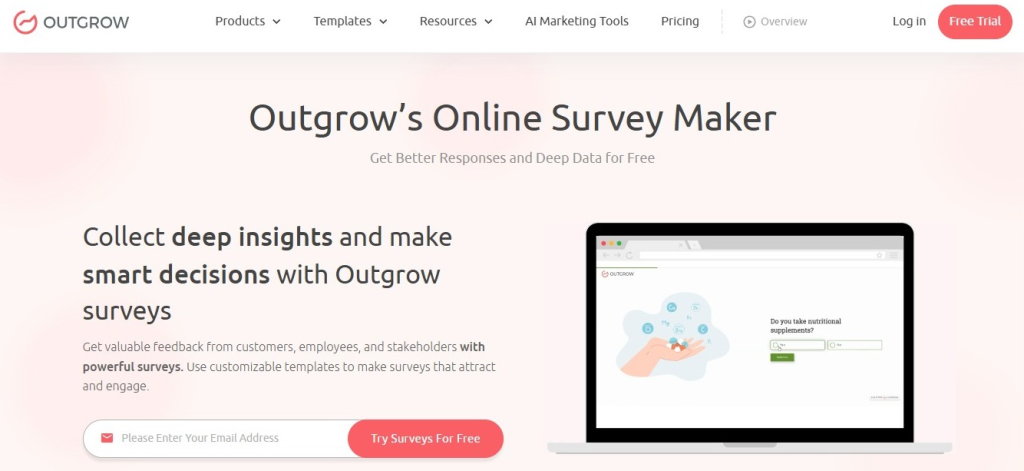
We built Outgrow for interactive experiences that deliver. When companies switch to our platform for employee satisfaction surveys, they get:
- Higher completion rates: Interactive surveys hold attention. Our clients average 70-80% completion versus 30-40% with traditional tools. Huge difference.
- Better data quality: Skip logic and conditional branching mean every question matters to that person. No frustrated employees randomly clicking through irrelevant stuff.
- Instant insights: Our analytics dashboard shows what matters without needing statistics training. Filter by department, compare time periods, and spot trends immediately. Actually intuitive.
- No-code setup: You don’t need IT for a professional employee satisfaction survey. Our drag-and-drop lets HR teams build surveys in hours, not weeks.
- True anonymity: Our platform protects who said what while giving you aggregate insights by team, location, or department. You get data without compromising privacy.
Want to see it work? Our free survey maker lets you test drive everything. Create a survey for free and see why thousands of companies trust Outgrow for employee feedback.
Check out our guide on how to create a free survey that gets the data you need. Or explore our survey tools’ free options to find what fits your team.
Industry Use Cases: Employee Satisfaction Surveys in Action
Different industries use employee satisfaction surveys to solve specific problems:
Use Case 1: Tech Startup Reducing Burnout
A 200-person SaaS company was bleeding talent. Their annual employee satisfaction survey wasn’t catching problems until people had already quit. They switched to quarterly pulse surveys using an interactive quiz format.
Questions hit workload, meeting fatigue, and work-life balance. They tested the format with a free online survey tool first, then scaled. Six months later, retention improved 18% because they caught issues early and adjusted sprint planning, meetings, and PTO based on real feedback.
Use Case 2: Healthcare System Improving Nurse Retention
A hospital network faced nursing shortages. Their traditional employee satisfaction survey got 35% responses and mostly generic feedback. They redesigned it as a 5-minute interactive experience on scheduling flexibility, staffing levels, and support.
Using conditional logic to ask different questions per department and shift kept it short but relevant. Response rates hit 78%. The data showed night shift nurses needed different support than day shift; their old survey never caught that. They adjusted staffing models, and retention improved by 22% over the next year.
Use Case 3: Retail Chain Understanding Frontline Needs
A national retail chain with 5,000+ employees struggled to get frontline feedback. Store associates never had time for long surveys, and what they got was useless. They switched to monthly 2-minute pulse checks on mobile using survey software built for quick hits.
Questions rotated monthly, scheduling one month, customer interactions next, and training needs after. This ongoing approach gave real-time insights into store-level problems. They identified which locations had management issues and which training actually helped. Store-level satisfaction scores jumped 31%.
Use Case 4: Manufacturing Company Addressing Safety Concerns
A manufacturing firm had great safety numbers on paper, but suspected people weren’t reporting near-misses. Their annual employee satisfaction survey included safety questions, but got sanitized answers. They created an anonymous safety-specific pulse survey using a free form builder.
Separating safety feedback from general satisfaction and guaranteeing anonymity got honest data. Near-miss reporting increased 340% in three months. They weren’t having more incidents; they were finally hearing about them. Let them fix hazards before injuries happen.
Use Case 5: Remote-First Company Building Connection
A fully remote 150-person company worried about isolation. Their employee satisfaction survey focused heavily on culture, connection, and remote work challenges. They used an online survey maker to create an interactive experience that felt conversational.
They asked about communication tool preferences, meeting frequency, async work challenges, and social connection. The data showed that newer employees felt disconnected, while veterans were fine; aggregate scores hid that. They launched a buddy system for new hires and adjusted onboarding. New employee satisfaction scores improved by 43%.
Your Employee Satisfaction Survey Action Plan
You read this far. You’re serious about fixing this. Here’s what to do:
This week: Audit your current employee satisfaction survey. Time yourself taking it. Be brutally honest; is it too long? Too vague? Too boring? Write down what sucks.
Next week: Draft 15-20 questions using principles from this guide. Specific, outcome-focused, conversational. Get feedback from a few trusted employees who’ll be honest.
Week three: Pick your tools. Starting from scratch? Try a free survey tool to test the waters. Need more power? Look at platforms built for interactive content.
Week four: Launch to a pilot group. 10-20 people who’ll give honest feedback about the survey itself. Refine based on what you hear. Don’t skip this.
Week five: Full launch. Communicate why you’re doing this, how long it takes, and what you’ll do with the data. Make it accessible on any device.
Week six: Share initial findings. Even still analyzing? Give people a preview. They’re waiting to see if their time mattered.
Weeks 7-12: Take action on top issues. Update everyone on progress. Start planning your next employee satisfaction survey; it should be 3-6 months out, depending on company size.
Companies that get the most from employee satisfaction surveys treat them as ongoing conversations, not annual checkboxes. Start small. Stay consistent. Actually use what you collect.
Wrapping This Up
Your employees want to tell you what works and what doesn’t. They want to help make your company better. The problem isn’t a lack of interest; it’s that most employee satisfaction surveys make sharing honest feedback unnecessarily hard.
Fix your survey design. Make it short, specific, and interactive. Use the right tools. Ask better questions. Share what you learn. Take action on what matters most.
Do this, and your next employee satisfaction survey will not just get higher response rates, it’ll get real, actionable insights you need to build a better workplace.Ready to create an employee satisfaction survey that doesn’t suck? Start with the right foundation. Check out our guide on building online forms for free or dive into our free survey maker to see how interactive content changes everything. Your employees are ready to talk. Are you ready to listen?
Frequently Asked Questions
It is a function of firm size and rate of change. Most firms are fine with quarterly pulse surveys (5-10 questions) and one large annual survey. High-growth startups may require monthly check-ins. Choose a rhythm you can sustain; frequency is beaten by consistency.
Anything over 70% is sound. Under 50% indicates participation issues. Receiving less than 40%? Your survey’s too long, timing’s off, or employees don’t trust the feedback counts. Address those first.
Yes, for candid feedback on sensitive topics such as management, pay, and culture. You may provide voluntary demographic questions (department, years with the company) for analysis without infringing on individual anonymity. Never create surveys that appear anonymous but aren’t; it ruins trust for good.
Strive for 5-7 minutes maximum. Survey lasting more than 10 minutes? You’re expecting too much and will lose halfway. Show respect for time by being parsimonious with questions. Quality prevails over quantity.
Three essentials: General satisfaction (“How likely are you to recommend this company as a place to work?”), retention indicator (“Do you see yourself here in a year?”), and one or more open-ended questions for surprising insights. Frame the rest around your particular objectives.

Muskan is a Marketing Analyst at Outgrow. She is working on multiple areas of marketing. On her days off though, she loves exploring new cafes, drinking coffee, and catching up with friends.

